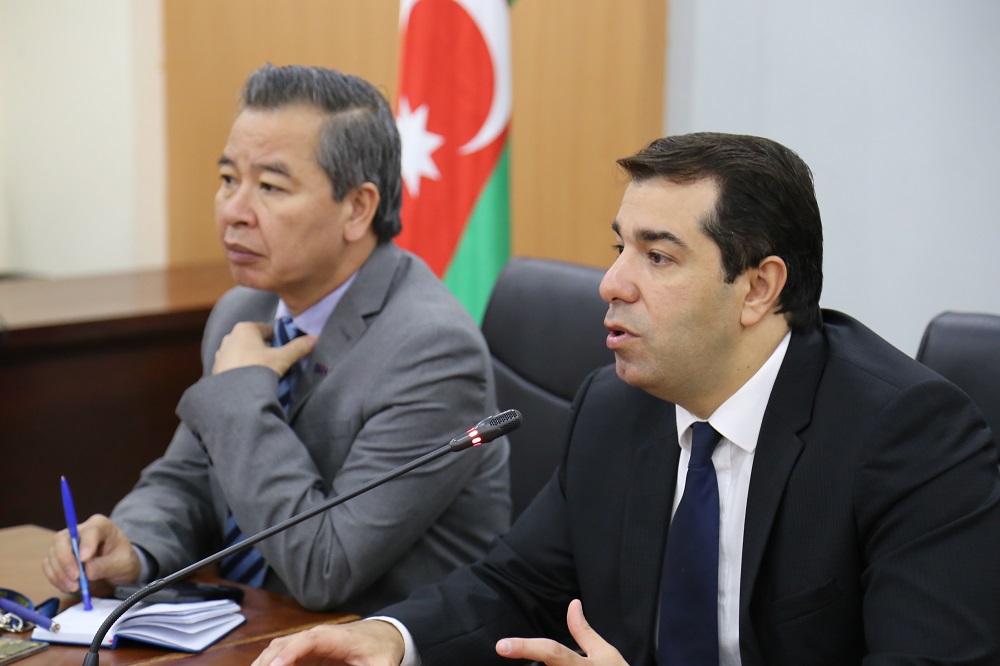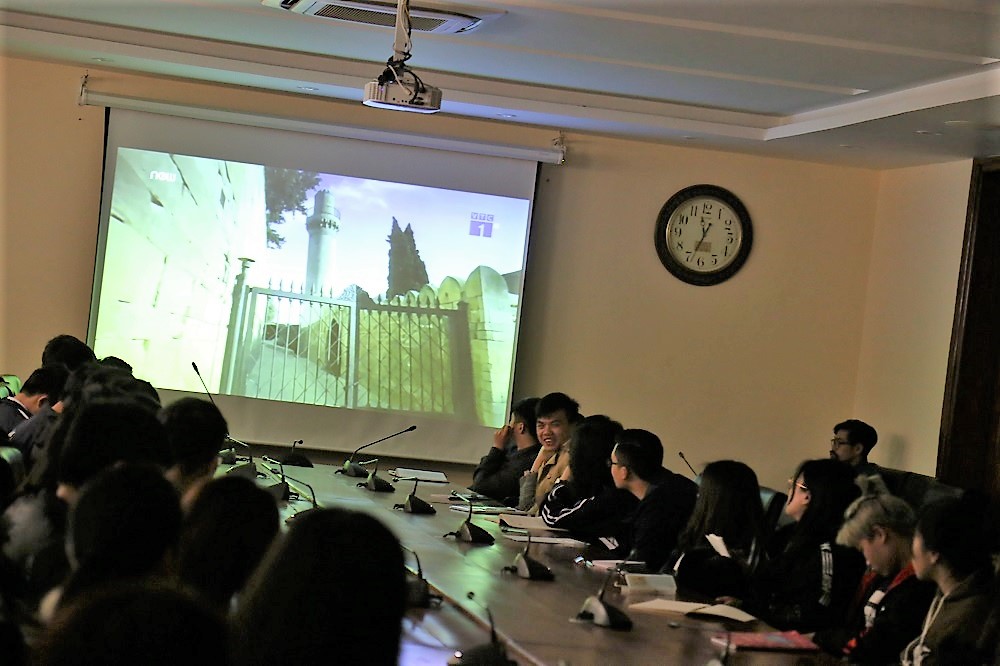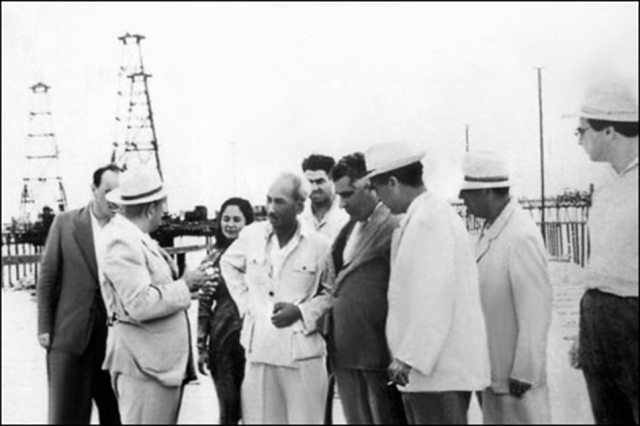The presentation retold the historical developments that led to the creation of Republic of Azerbaijan, and described some important events surrounding Vietnam-Azerbaijan bitateral relations in the past.
Before the 19th century, Azerbaijan was a combination of many small kingdoms under the leadership of the khans, which were surrounded by great powers at that time such as Persian Empire and the Russian Empire. After the collapse of the Russian Empire during the First World War, Azerbaijan was integrated into the Transcaucasian Democratic Federative Republic together with Armenia and Georgia. In 1918, Azerbaijan declared independence as a parliamentary republic state titled Azerbaijan Democratic Republic. However, this state only lasted until 1920, when the Red Army forces began to incorporate its territories into USSR.

Ambassador Anar Imanov (right) gives his presentation
In 1922, Azerbaijan along with Armenia and Gruzia were combined into the Transcaucasian Socialist Federative Soviet Republic; from which it was separated to become Azerbaijan Soviet Socialist Republic in 1936. During the 1980s, the economy of USSR began to crumble, leading to Michail Gorbachev's economic reforms and its eventual collapse in 1991. During this period, many countries in the Socialist Bloc tried to fight for their independence. In November, 1990, Azerbaijan declared independence as Republic Azerbaijan. After the 1988-1994 bloody war between Azerbaijan and Amernia, the country started its series of post-war reforms and until today has made rapid developments, taking special advantage of its oil reserves.

USSH' students watching a video about Baku, the capital of Azerbaijan
With regard to Vietnam, Ambassador Anar Imanov said Vietnam and Azerbaijan share a lot of similarities given they both had to fought arduously for national independence. In retrospect, in 1959, President Ho Chi Minh visited and asked for the support from Azerbaijan's leaders in developing Vietnam's oil industry, which was a pivotal industry at that time. In 1960, Azerbaijan receveid the first batches of students from Vietnam, and in return later sent its experts to Vietnam to investigate the off-shore oil deposits, the first among which was the White Tiger oil field, 145km away from Vung Tau's coastal line. In 1983, Azerbaijan's leader Heydar Aliyev, then Deputy Chairman of the USSH's Council of Ministers visited Vietnam and signed many agreements granting aids to Vietnam for its post-war reconstruction. The two countries officially established diplomatic relations in 1992. In 1994, Azerbaijan also began training naval officers for Vietnam.

President of the Democratic Republic of Vietnam Ho Chi Minh visited the Baku oil industry zone in 1959
These historical encounters paved the way for the multi-dimensional and extended cooperation between the two countries. In 2013, the Republic of Azerbaijan officially opened its embassy in the Socialist Republic of Vietnam. In 2014, Azerbaijani President IIham Alieyev visited Vietnam and the next year, Vietnamese President Truong Tan Sang visited the former. The two sides also established an Inter-Governmental Committee and a Parliamentary Friendship Group. After 25 years of diplomatic relations, Vietnam and Azerbaijan have gained notable achievements in political, economic, energy, cultural, and tourism areas.
With regard to USSH's students, the Ambassador hoped that the cultural exchanges and dialogues would help improve the understanding of Azerbaijan among Vietnamese youth. For example, the photo exhibition to celebrate the 100th anniversary of Republic of Azerbaijan on March, 29th, 2018 at the University was enthusiastically attended by various USSH's students. The participation in these events contributes to bilateral relations. In return, the Embassy of Azerbaijan in Vietnam committed to providing scholarships and sending Azerbaijani lecturers to teach at the University in the future.
Author: Tran Minh
Reader Comments
Newer articles
Older articles